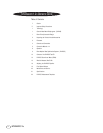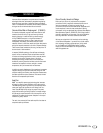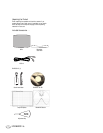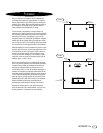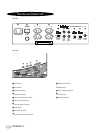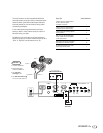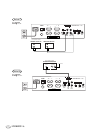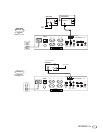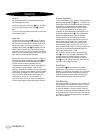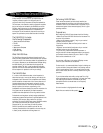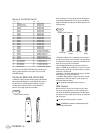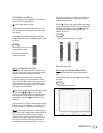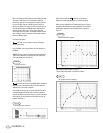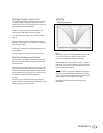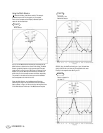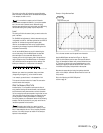
8
INTERMEZZO 1.2s
Power On
Plug your subwoofer’sAC cord into a wall outlet.Do not use the
outlets on the back of the receiver.
Initially set the subwoofer’s Level Control ¸ to the “O”position.
Turn on your sub by pressing the power button
ᕢ
on the rear
panel.
Turn on your entire audio system and start a CD or movie sound-
track at a moderate level.
Adjust Gain
Turn your subwoofer’s Level Control
¸
up to the “5”position
(half way). If no sound emanates from the subwoofer,check the
AC-line cord and input cables.Are the connectors on the cables
making proper contact? Is the AC plug connected to a “live”
receptacle? Has the power button
ᕢ
been pressed to the “On”
position? (Note:The Level Control on the front panel will turn
green when the power is on.) Once you have confirmed that the
subwoofer is active, proceed by playing a CD, record or cassette.
Use a selection that has ample bass information.
Set the overall volume control of the preamplifier or stereo to a
comfortable level.Adjust the subwoofer’s Level Control
¸
until
you obtain a pleasing blend of bass. Bass response should not
overpower the room but rather be adjusted so there is a
harmonious blend across the entire musical range. Many users
have a tendency to set the subwoofer volume too loud,
adhering to the belief that a subwoofer is there to produce lots
of bass.This is not entirely true.A subwoofer is there to enhance
bass, extending the response of the entire system so the bass
can be felt as well as heard. However, overall balance must
be maintained or the music will not sound natural.An
experienced listener will set the volume of the subwoofer so
its impact on bass response is always there but never obtrusive.
OPERATION
Crossover Adjustments
If you are using Method 1 as your connection method,you need to
set the High-Level High-Pass Filter ᕥ to “On” or “Off.”When on,
this adjustment limits the low frequencies that your main speakers
will reproduce. If you would like your main speakers to also
reproduce frequencies below 80Hz, you may set this switch to
“Off.”If you are using speakers that do not reproduce low
frequencies well,we recommend that you set the switch to “On.”
Low-Pass Filter Adjustment Control µ – The Low-Pass Control
determines the highest frequency at which the subwoofer
reproduces sounds. If your main speakers can comfortably
reproduce some low-frequency sounds, set this control to a
lower frequency setting, between 50Hz – 100Hz.This will
concentrate the subwoofer’s efforts on the ultradeep bass
sounds required by today’s films and music. If you are using
smaller bookshelf speakers that do not extend to the lower bass
frequencies, set the Low-Pass Filter Adjustment Control to a
higher setting, between 120Hz – 150Hz.
Note: This control will have no effect if the Low-Pass Filter
Switch ᕩ is set to “Off.”If you have a Dolby Digital or DTS
processor/receiver, the Low-Pass Frequency is set by the
processor/receiver. So you should leave the Low-Pass Filter
Switch ᕩ in the “Off”position. Consult your owner’s manual to
learn how to view or change this setting.
Phase Control
The Phase Switch ᕨ determines whether the subwoofer
speaker’s piston-like action moves in and out with the main
speakers, 0˚, or opposite the main speakers, 180˚. Proper phase
adjustment depends on several variables such as room size,
subwoofer placement and listener position.Adjust the phase
switch to maximize bass output at the listening position.
Final Positioning
After correctly connecting the Intermezzo 1.2s and verifying that
both the subwoofer and main speakers are playing, it is time to
optimize the system for your particular listening room. Earlier,
you placed the subwoofer in its general location. Finding the
exact location for optimum performance sometimes only involves
moving the speakers up to a few inches in any direction.We urge
you, therefore, to experiment with placement until your speakers
deliver their full potential.



